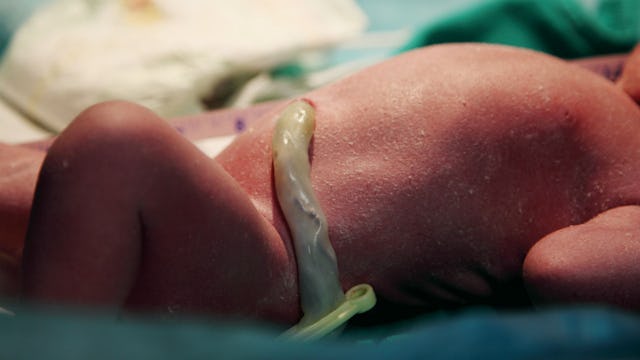Delaying Cord Clamping By One Minute Could Save Thousands Of Premature Babies

Study says 60 seconds could save thousands of lives
There’s been debate for years about whether it’s most beneficial to newborns to clamp their umbilical cords immediately after birth or to delay it for a brief period. Now, a study from The University of Sydney is arguing that a delay of just 60 seconds could save thousands of premature babies.
RELATED: Is Your Baby’s Umbilical Cord Infected? How To Tell (And Other Care Basics)
At the heart of the debate over the timing of cord clamping is how long the umbilical cord should remain intact so that infants see the positive outcomes resulting from longer placental transfusion. These benefits have been found to be especially significant in pre-term babies.
Back in January, the American College of Obstetricians and Gynecologists’ Committee on Obstetric Practice published a document stating that in pre-term infants, a delay of 30-60 seconds: “…improved transitional circulation, better establishment of red blood cell volume, decreased need for blood transfusion, and lower incidence of necrotizing enterocolitis and intraventricular hemorrhage.”
In this new study, 3,000 babies born before 37 weeks gestation were studied to see if there was any difference in outcomes for those who had their cords clamped immediately after birth and those who were delayed by 60 seconds. They found that waiting 60 seconds reduced in-hospital deaths among those infants by a third. Associate Professor David Osborn, the lead researcher for the study, told Eureka Alert, which published the press release on the study last week, that: “We estimate that for every thousand very preterm babies born more than ten weeks early, delayed clamping will save up to 100 additional lives compared with immediate clamping…This means that, worldwide, using delayed clamping instead of immediate clamping can be expected to save between 11,000 and 100,000 additional lives every year.”
According to the World Health Organization, 15 million babies worldwide are born prematurely every year. In the United States, after falling 8% between 2007 to 2014, the premature birth rate increased over the past two years, reaching 9.84% of all births in 2016. There are countless studies going on right now, trying to figure out how to reduce that number again and how to save any babies who are born early. But this is something incredibly easy that can be done right now to help improve outcomes for premature babies.
This isn’t a drug or an invasive procedure or anything wildly experimental. It doesn’t even cost any money. This is just waiting 60 seconds before clamping a newborn’s cord. That’s amazing.
Of course, delaying the clamping of the umbilical cord is not always possible with premature infants, some of whom require immediate resuscitation after birth. But for those who have that 60 seconds, this simple act might give them an even better chance at life.
This article was originally published on